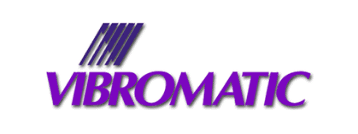Assembly line feeder systems are crucial mechanisms that ensure the smooth and efficient supply of components or materials to assembly lines. They typically employ automation to organize, transport, and deliver parts precisely as needed for production. By maintaining a consistent flow of materials, these feeder systems help optimize manufacturing processes.
This article delves into the benefits, essential components, and processes of assembly line feeder systems. We will also explore the latest trends and technologies shaping their evolution.
Advantages of Using an Assembly Line Feeder System
These systems offer a range of benefits that improve the productivity of manufacturing operations. Here are some of the key advantages:
Increases Efficiency
Feeder systems significantly reduce the time and effort required to manually handle parts by automating the supply of components to the assembly line. This guarantees a consistent flow of materials, which streamlines production processes.
Higher Quality
Automated feeder systems precisely control the orientation and delivery of components, reducing the risk of defects. Consistent part placement and handling leads to higher-quality products with fewer mistakes than manual operations.
Lower Costs Due to Fewer Human Operators
Utilizing an assembly line feeder system reduces the need for manual labor, lowering labor costs and mitigating the risks associated with human error. Fewer operators are needed to manage the assembly line, which can result in cost savings for manufacturers.
Increases Production Rate
Automated feeder systems can operate faster than manual processes. This speed allows manufacturers to meet higher demand and improve their output without compromising quality.
Key Components and Processes in Assembly Line Feeder Operations
Assembly line feeder systems are complex setups with several key components and processes working together. These include:
- Hoppers and bowls: Hoppers typically hold many components, while bowls help orient and separate them for easier handling.
- Conveyors: They transport parts from the storage area to the assembly line and are designed to move parts quickly to ensure a steady supply in production.
- Feeders and orienters: These mechanisms use vibration, gravity, or pneumatic systems to make sure that parts are correctly oriented before reaching the assembly line.
- Sensors and control systems: Sensors detect parts while control systems manage speed and timing, coordinating with the assembly line to maintain a consistent flow.
- Robotic arms and pick-and-place units: Advanced systems use these units to transfer parts from the feeder to the assembly line, guaranteeing precise handling and placement for greater efficiency.
Emerging Trends and Technologies in Assembly Line Feeder Systems
These innovations improve the quality and flexibility of an assembly line feeder system, placing it at the forefront of modern manufacturing technology:
Robotics Integration
Modern assembly lines are increasingly incorporating robots equipped with artificial intelligence (AI) capabilities. These robots perform repetitive and precise tasks, reducing human error and allowing for the automation of more complex operations.
Vision Systems
These systems use cameras and sensors to accurately identify, inspect, and sort components. Machine learning algorithms improve their accuracy over time, which makes them indispensable for quality control and reducing defects in the assembly process.
Flexible Feeding Solutions
AI-driven flexible feeding solutions are gaining popularity due to their adaptability to different parts and products without requiring significant reconfiguration. These systems can quickly switch between tasks, making production lines more responsive to changing demands.
Multimodal Sensing
Multimodal sensing combines various visual, auditory, and tactile sensors to comprehensively understand the environment. This technology improves the accuracy of feeder systems by providing robust data for decision-making processes, thereby improving the automation and control of assembly lines.
Boost Your Production Line With Vibromatic Co.’s Innovative Feeder Systems!
At Vibromatic Co., we recognize the crucial role of efficient parts handling in manufacturing success. We specialize in assembly line feeder systems and offer a variety of solutions, including vibratory bowl feeders, belt-style linear systems, floor feeders, and more. Trusted by industry leaders like Ford Motor Company, GM, Toyota, Honda and Tesla, Vibromatic Co. is your partner for superior feeding system solutions!
Contact us today to improve your production line efficiency, or request a quote to get started.

